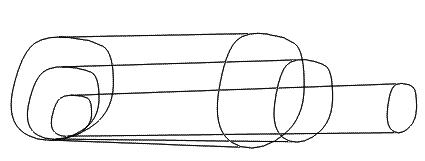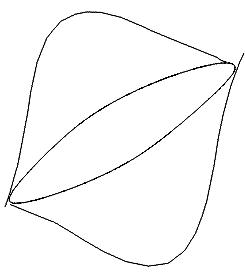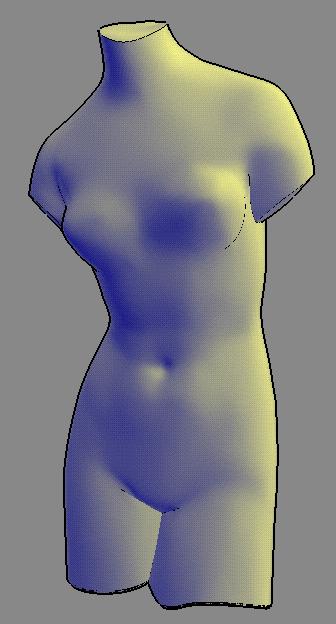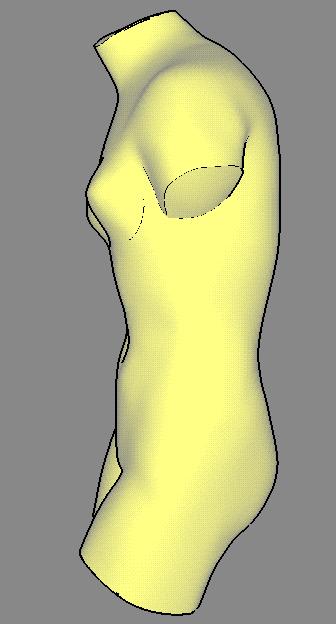

|
| Figure 4.25: Comparing this figure to Figure 1.1, the edge lines displayed provide shape information without cluttering the screen. |


|
| Figure 4.25: Comparing this figure to Figure 1.1, the edge lines displayed provide shape information without cluttering the screen. |
Imitating 2D technical illustrations is fairly straightforward. However, there are several new issues to address when creating 3D illustrations. Three-dimensional technical illustrations involve an interactive display of the model while preserving the characteristics of technical illustrations. By allowing the user to move the objects in space, more shape information may be available than can be conveyed by 2D images. Interaction provides the user with motion cues to help deal with visual complexity, cues that are missing in 2D images. Also, removing the distracting wireframe lines and displaying just silhouettes, boundaries and discontinuities will provide shape information without cluttering the screen, as shown in Figure 4.25.
The question remains, ``how do the 2D illustration rules change for a
3D interactive technical illustration?'' Adapting the shading and
line conventions presented in Chapter 3 is fairly
straightforward as long as the line width conventions have
frame-to-frame coherence. The more interesting issues depend upon
changing the viewer's position versus moving the object. Since there
are no protocols in traditional illustration, it may be best to model
these 3D illustration conventions based on how one would move real
object. This has an effect on how the light changes with respect to
the object. The light position can be relative to the object or to
the viewer. When one looks at a small object in one's hand, one turns
the object and does not move one's head, so the light stays in the
same position relative to the eye. However when one moves an object in
an modeling program or when one is looking at a large part, ones is
actually moving the eye point, not the object. As shown in
Figure 4.26, the shading model presented in
Section 3.2 is used to its full advantage if the surface
varies completely from cool to warm, as shown in comparing
Figure 4.26(b) and Figure 4.26(c).

|

|

|
| Frame of model with new shading in an interactive environment with lights positioned up and to the right. | Frame after the camera position is moved to view the side of the model. | Frame after moving the object instead of the camera, allowing the surface to vary completely from cool to warm. |
| Figure: Frames from the NPR JOT Program, to which I used Markosian et al.'s silhouette finding technique [24] and added the OpenGL approximation to the new shading model. This will be discussed further in Chapter 5. | ||
When illustrators light multiple objects, they may use a different shading across different objects, inferring that each object has its own light, which does not affect the other objects in the environment, similar to the ``virtual lights'' by Walter et al. [37]. For example, two objects in a scene may be lit differently to draw attention to different attributes of each object. If this was accomplished by adding two lights to the environment, the multiple highlights would be confusing.
Most material properties are semiconstant as the view direction or lighting changes. However the metal shading presented in Section 4.2.3 is the replication of the anisotropic reflection due to the surface of the object and the reflection of the environment. When a real metal part is rotated in one's hand, the banding does not stick to the object, but remains constant since the environment is not changing. However, in an non-photorealistic interactive environment it may be too jarring to have the metal shading changing abruptly. Using a metal texture would be more appropriate and a metal texture in an interactive environment would still convey the material property.
Another notion is to allow the relative size of the object to control the motion of the viewer, the object, and the light source in an interactive 3D illustration. In the end, allowing the user to choose whether the object moves or the eye point changes, as well as having control over the lights, may help the viewer gain the most shape information.